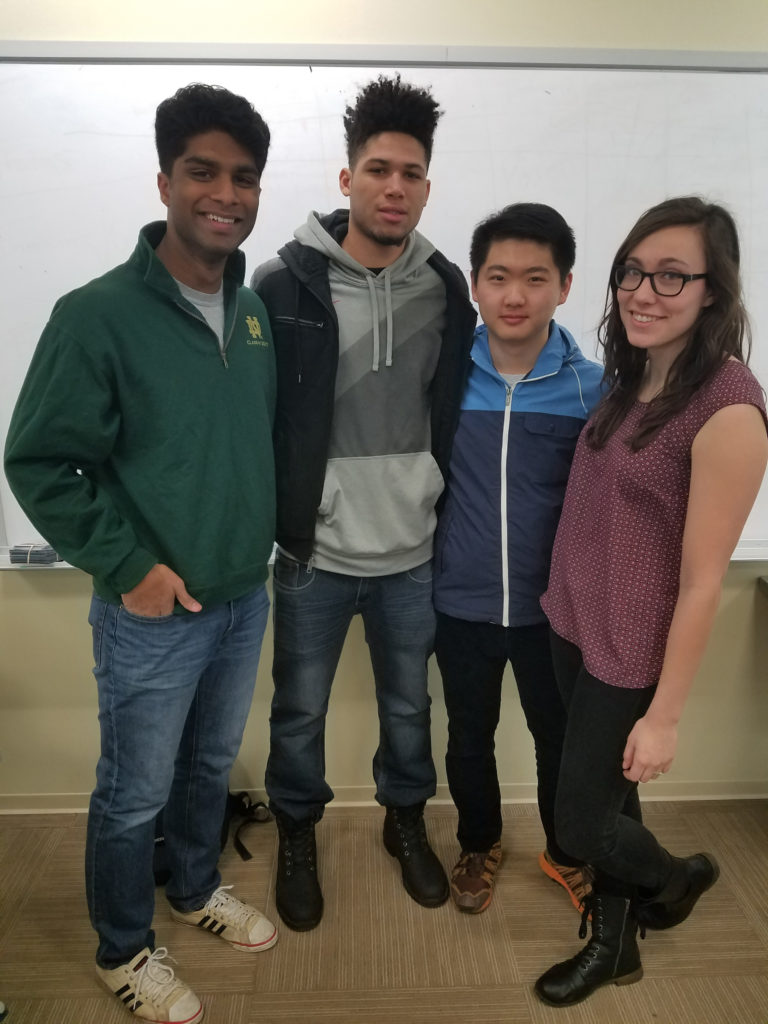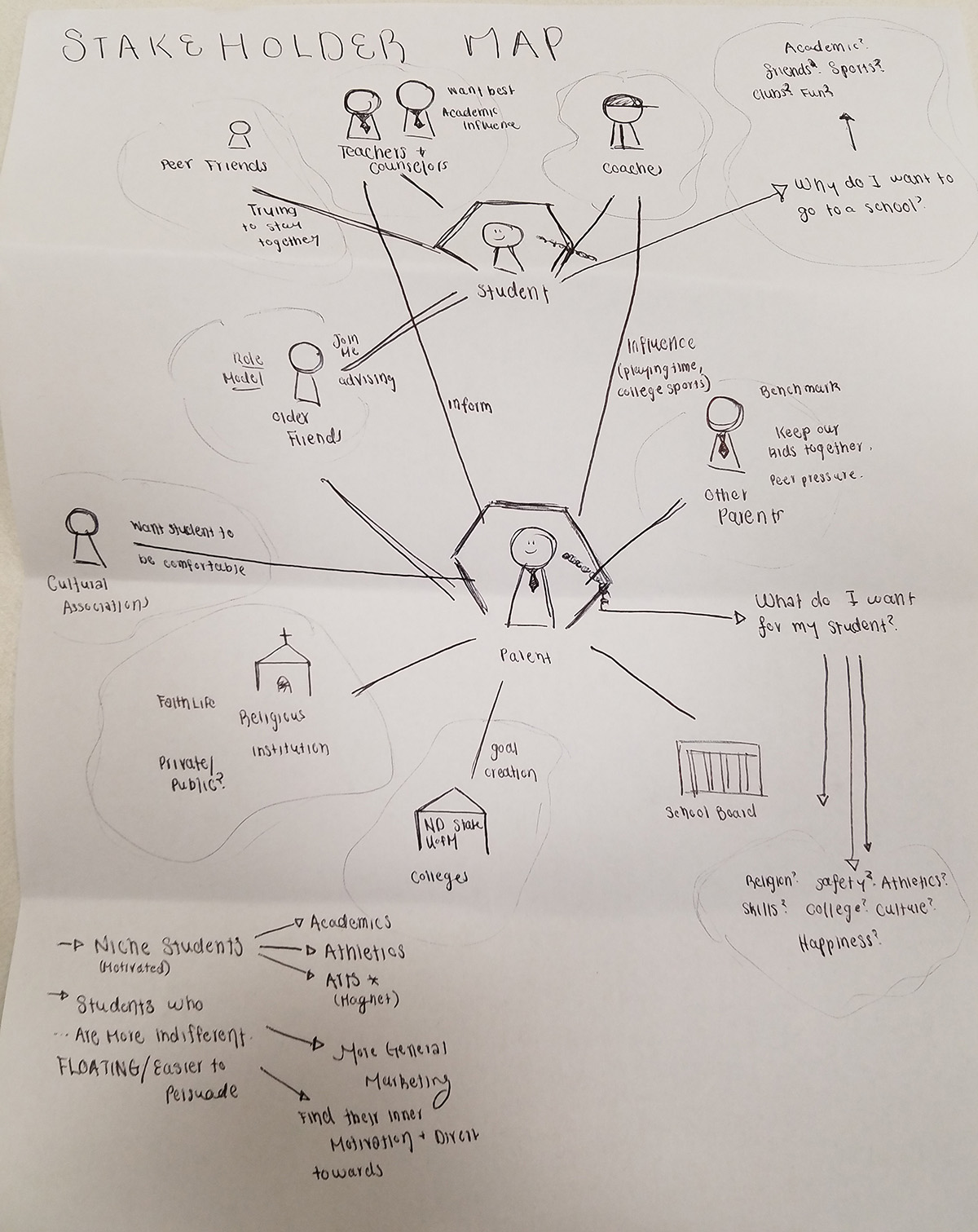Interview 5: EXPERT (Conducted at Brothers at 5pm Thursday (3/2)
Name: Mr. John Anella
Gender: Male Age: Middle Aged
Expert Status: Member of the South Bend School Board
Mr. Anella attended the University of Notre Dame and studied Psych and Accounting when he went to Notre Dame, has 5 children (Senior and freshman at Adams, 7th, 5th, 2nd grade at St. Joe, and sits on the school board.
His two oldest children are at Adams, the other three attend St. Joe Middle and Elementary schools.
Experience and decision making for first kid:
– First kid was so done with Catholic School.
– You live here and you have kids in the schools,
– Your friends, and your kids friends have older siblings, you hear about the schools
– The perception of the south bend schools is terrible
– The perception of Clay is a lot more negative than the actuality
– My son who goes out to Washington jokes about going to the ghetto.
– There is an administrator who works at clay who sends his daughter to penn, because “even I wouldn’t send my kids here”
– We lose kids in South Bend to Penn
– The catholic schools in the area are also good.
– A lot of it is perception of the kind of environment kids want.
– If one of his youngest wanted to go to St. Joe, he would let them as long as they have taken all the options into account
o However, his younger kids look up to their older siblings (one is an artist and one is sporty)
o Most of the time, younger siblings go where the older siblings go?
Did you choose Adams because of the IB?
– It is very important to him – considering both of his boys are in it. “Both of his high schoolers are in IB, and love the program.”
– Obviously, you are looking for the best academic choice.
– His kids came through Catholic grade school, St. Joe
– Most kids from St. Joe went to St. Joe, about a third went to Adams
– He likes IB over AP, curriculum that is internationally accepted. His son has two friends (one from Austria and Belgium because they can transfer back to his European schools.)
– His son is on track for the diploma and has not taken any AP classes.
o Last Year, 27 got the diploma, 100 some got the certificate,
– IB is more standardized.
– They chose the school for its IB, and the fact that it is close.
o They live less than a mile away.
Other Notes:
– His kids are in the IB program.
– His son has participated in the Orchestra Pit at Clay, he wasn’t in the school, but they needed a base player so he got to play with them.
– “South Bend will be closing schools soon.”
– Downside to the Magnet:
o Gay Clay perception and you pigeonhole students
– A referral is the most powerful thing you can do.
– A principal does set the tone for a building
– The news loves bad media, and it just feeds the stereotypes.
– Clay has School Within a School – it is in school detention but not called in school detention because they’re learning.
– The alternative school has a lot more resources.
– Clay could be an AP magnet.
– Adams will soon face enrollment options (too many students), if students can’t get into Adams, might they go to Clay?
– People also base where they go on geography
– Looking at local middle school scores – if people don’t get their kid into LaSalle, they might send them into Jefferson.
o If people can’t get into one of those, they bail out of the Catholic school system.
– The hardest challenge in the HS is that most teachers are white, because that is who is available. Minority faculty aren’t as prevalent.
– Adams has an incredible bilingual program.
– For him, as a parent, he just wants good teachers. Their level of diversity doesn’t really make a difference.
– Most funding comes from the state, then the local tax collections were capped (so now they get less for transportation), and they get federal dollars for students with special needs.
o If you lose a kid, you lose 65,000 dollars.
o There is not enough development
– All the South Bend Public schools are roughly the same looking
o Most of the schools are really nice.
o Clay Intermediate is falling apart a little bit.
o We should close buildings because the money is spread too thin.
Quotes:
“As a parent, I’d rather choose a school because of academics.”
“Washington has a uniform policy, I guess there are some kids who will go there just because they don’t have to wear a uniform.”
“When they see their friends moving to Penn or St. Joe, they’re like ‘I’m not going to Clay’”
“One of Mansour’s challenge’s is that they will have behavior problems, and it is a very small amount of kids… the joke is that every year Clay sends 50 kids to Rise Up. These schools would love to send more kids to alternative institutions.”
“Safety has never been an issue at Adams.”
“Some of the perception of danger is probably a little racist too. People have a perception that isn’t always fair.”
“You have got to get the parents to buy in, a lot of it is getting the word out. Maybe you have to start small and earn the respect of people of the community.”


